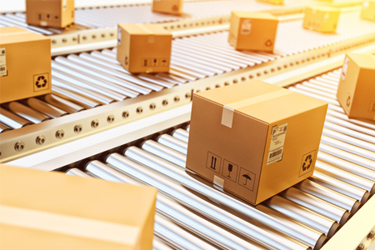What Tech And IT Have To Do With Product Packaging
By Devin Partida, ReHack.com

Many companies in the modern business world need to create a unique selling point (USP) to capture the attention of existing and potential customers. Standing out from the crowd is important in an increasingly competitive marketplace.
One potential avenue companies are turning to is their packaging. All companies package their products in unique ways — take the company Hungryroot for example. They make their packaging bright and colorful to attract customers directly to their products.
Retailers and other types of businesses can leverage technology to improve their operations as well as their packaging designs to offer a better customer experience (CX). Delivering on and exceeding customer expectations is something that every company should prioritize, and how products are packaged is no different.
Below are some examples of the technologies being used to improve the packaging process for all kinds of companies.
The Importance Of Proper Packaging
Packaging plays a significant role in the customer experience and can determine whether customers want to come back to spend more money on repeat purchases. A well-designed product package can grasp a customer’s attention and help businesses generate more viable leads.
Those leads can be converted into lifelong customers, which is yet another reason why more companies are taking the time and effort to invest in their product packaging. The ultimate goal for any retailer is to earn the trust and loyalty of customers to foster positive customer relationships and help businesses grow and expand into new markets.
Advancement in various technologies has enabled companies to elevate their product packaging process and create innovative product packaging that wins the hearts and minds of their customers.
Emerging Technologies And Trends In Product Packaging
With technology advancing rapidly, it’s only a matter of time until more packaging options are available to retailers.
In one packaging case, the ultimate goal was to protect wafer cookies that were being shipped, and Pearson’s RTL-MX, essentially an advanced robotic arm, was able to pack these cookies in a way that kept them from breaking before reaching the final destination.
Below are other examples of the emerging technologies being leveraged to improve product packaging in today’s competitive retail environment.
1. Digital Printing
The digital world allows people to create innovative products, as well as innovative product packaging. Digitizing the packaging process using digital printing technology positively impacts companies that need to provide unique packaging solutions to their customers.
Aside from digital designs, digital printing allows companies to include QR codes, RFID tech and augmented reality (AR) into their product packaging. It can improve CX when digitally printed packaging becomes interactive.
2. Computer Vision
Computer vision is a technology that is still being developed and is likely to be used across several industries in the future. Computer vision is crucial to ensure that the final product has error-free packaging. Computer vision works when a computer can recognize information from images, videos, and the real-world environment.
Computer vision can identify issues in a package’s text, color, or logo, saving time and resources. The last thing any retailer wants is to send out packaging with errors, as it could harm a company’s reputation.
3. Edible Packaging
It shouldn’t come as a surprise that edible packaging would become increasingly popular for all types of businesses. In addition to improving CX, edible packaging is better for the environment, as there’s no waste if someone eats the packaging a product comes in.
Whether it’s edible straws, drink pouches, food containers, or any other packaging, it’s interesting that raw materials are being used for packaging products rather than using plastic or cardboard boxes.
4. Smart Packaging
Smart packaging has the potential to reduce costs and increase profits for retailers. When technologies are embedded into packaging, it helps bridge the gap between the physical and the digital. The two forms of smart packaging are intelligent packaging and active packaging:
- Intelligent packaging: Packaging that has an array of functions, such as tracking products, sensing the temperature of the product, and communicating information about the product to a customer.
- Active packaging: Involves adding or removing components of a package to improve shelf-life. Examples include removing oxygen from a container or adding absorbers.
Smart packaging is commonly used in the food manufacturing industry, as it can help keep food fresh for longer periods. It also can be used by retailers, especially when they want to track a packaged product’s journey.
5. Nanotechnology
Last but not least, nanotechnology is making waves in the packaging industry. Adding anti-fingerprint nano-coating to packages is seen time and time again. Nanotech packaging can provide:
- Advanced package tracking
- Dynamic visuals
- Theft protection
- Active monitoring
- Online connection
Additionally, nanotechnology is more sustainable and contributes significantly to the reduction of waste across the packaging industry. All types of businesses are leveraging these technologies to make the packaging process more robust, which can create positive relationships with customers and increase profits.
More Packaging Innovations In The Future
More packaging innovations will likely emerge as more technologies advance and become more prevalent in the packaging industry. Retailers and other companies across various sectors will be able to use these technologies to improve packaging for all of their products and deliver on ever-changing customer expectations.
About The Author
Devin Partida is a writer and blogger interested in retail technologies and business solutions. To read more from Devin, visit ReHack.com, where she is the Editor-in-Chief
